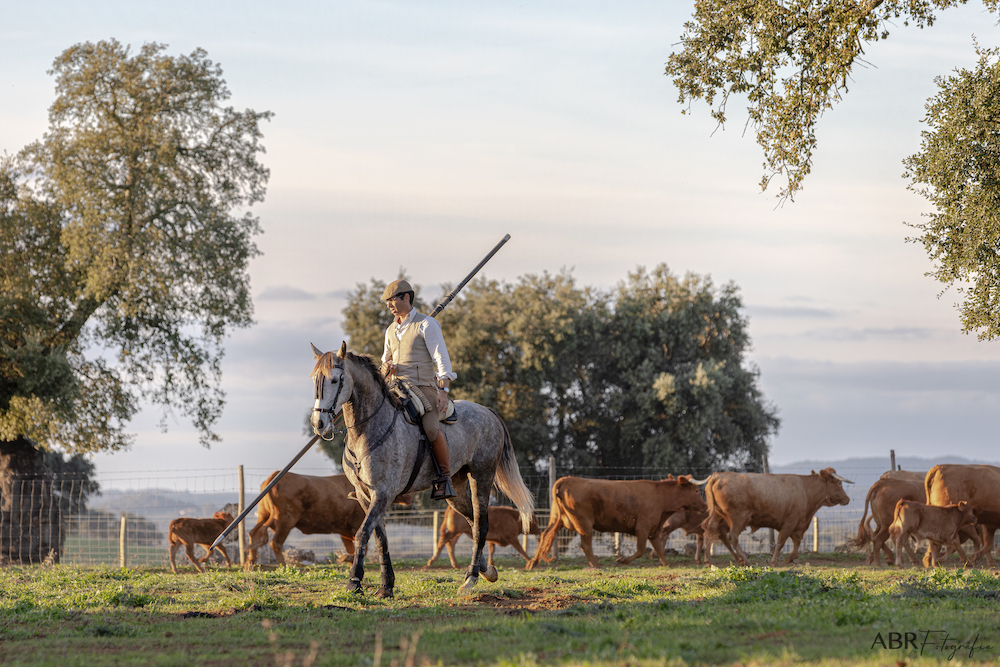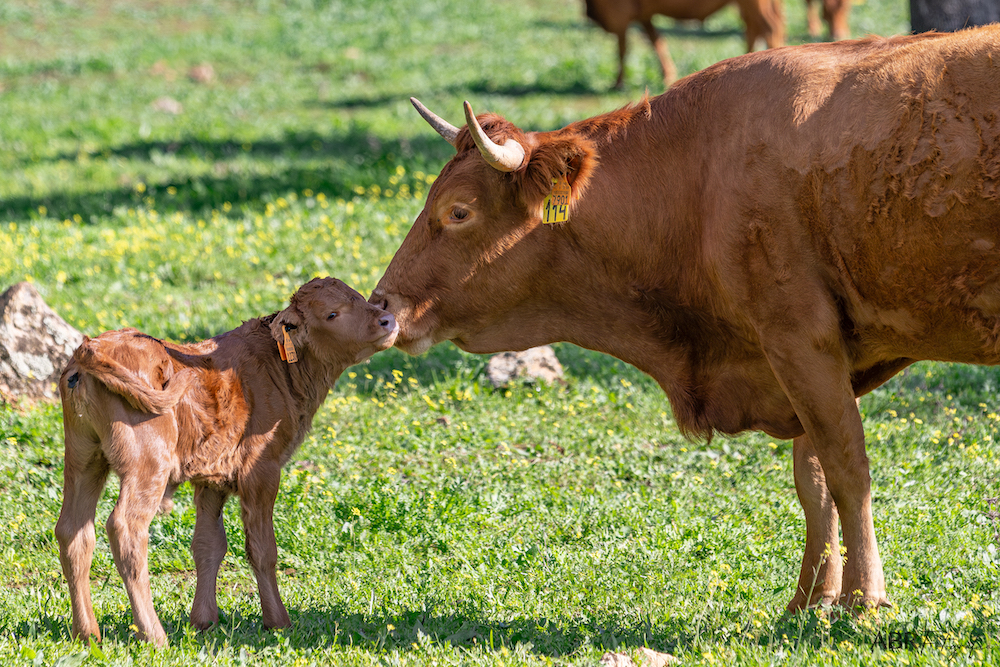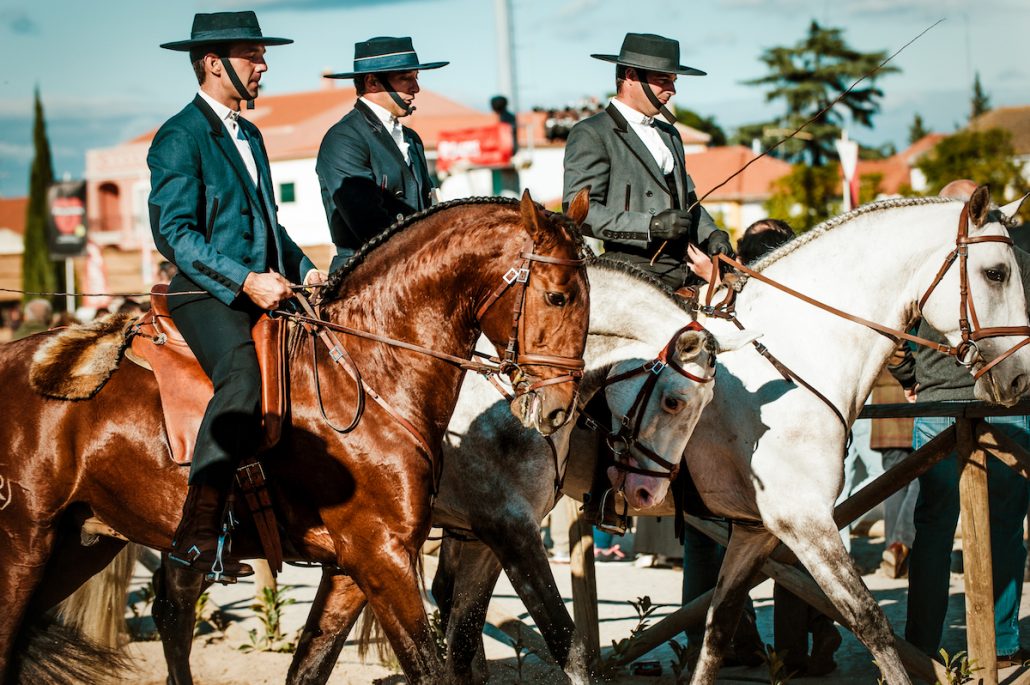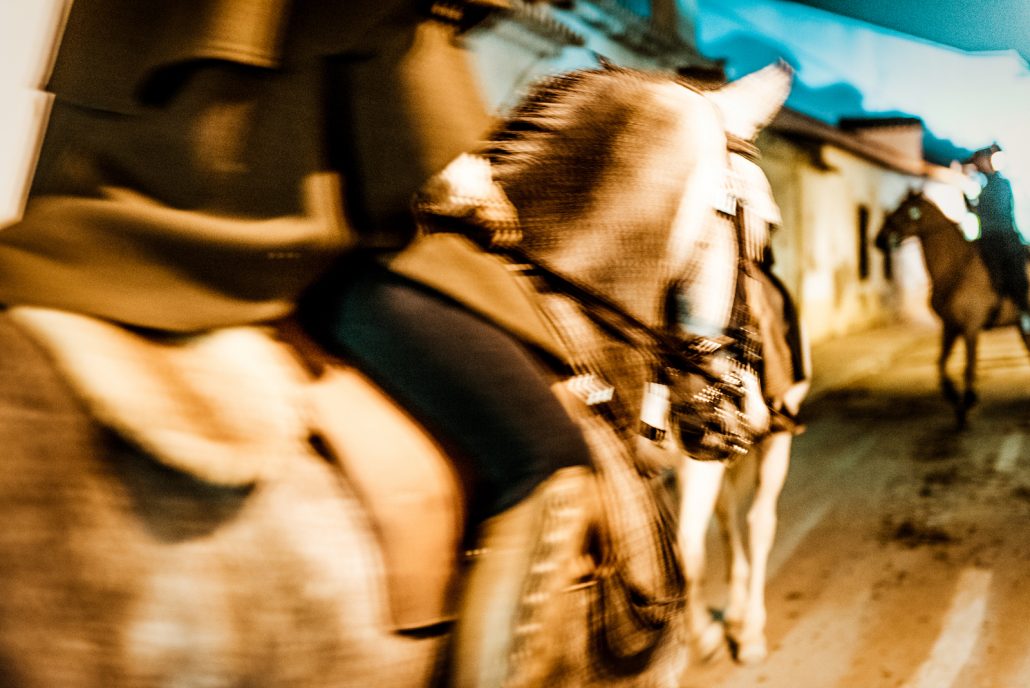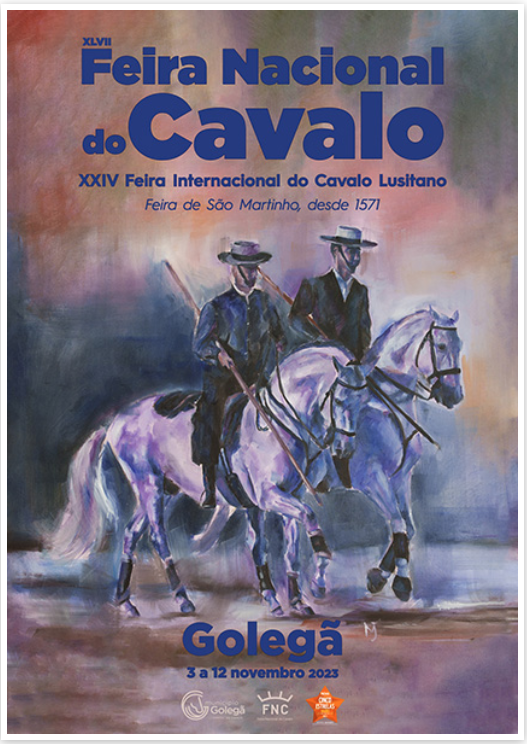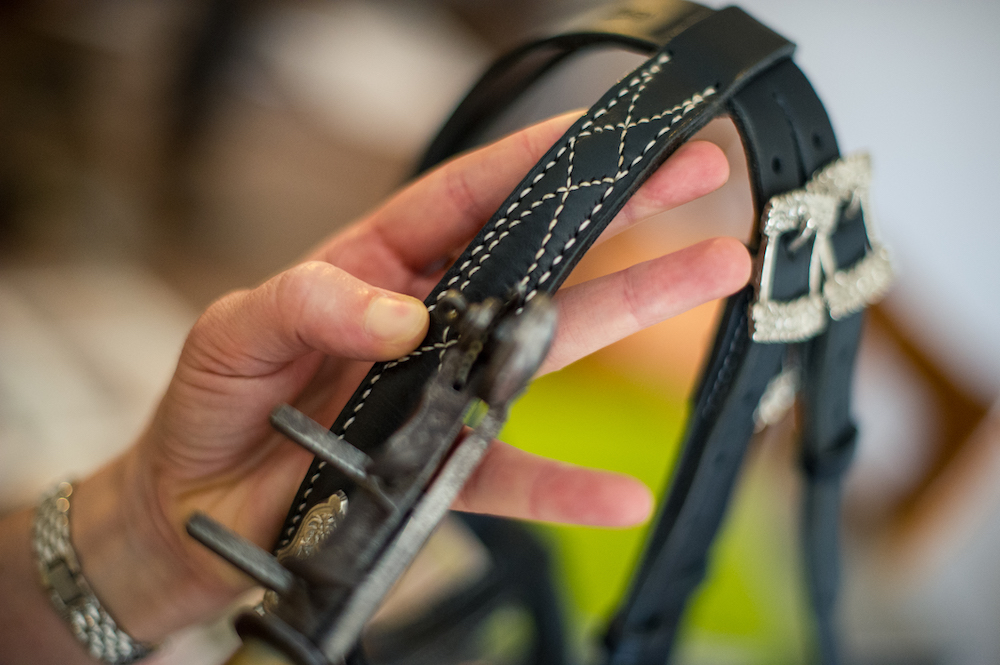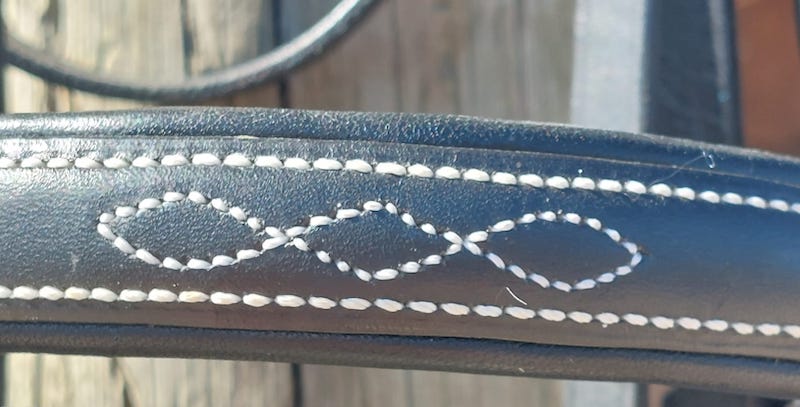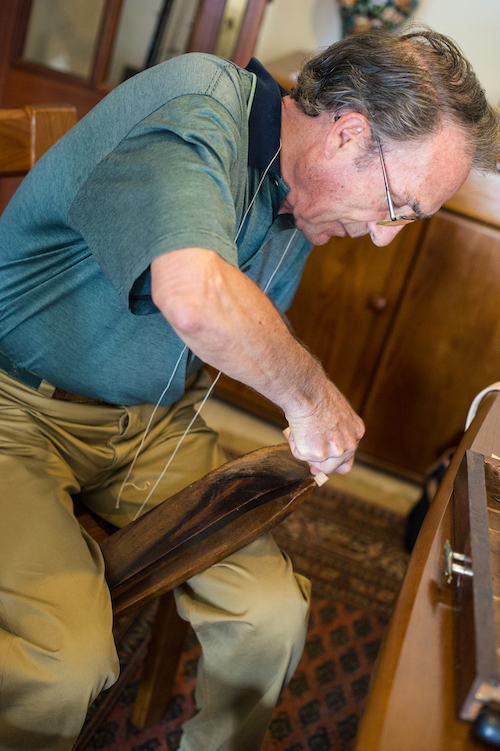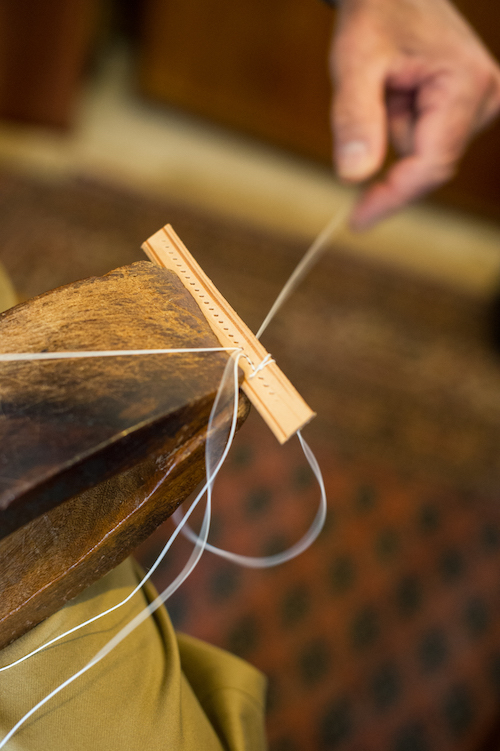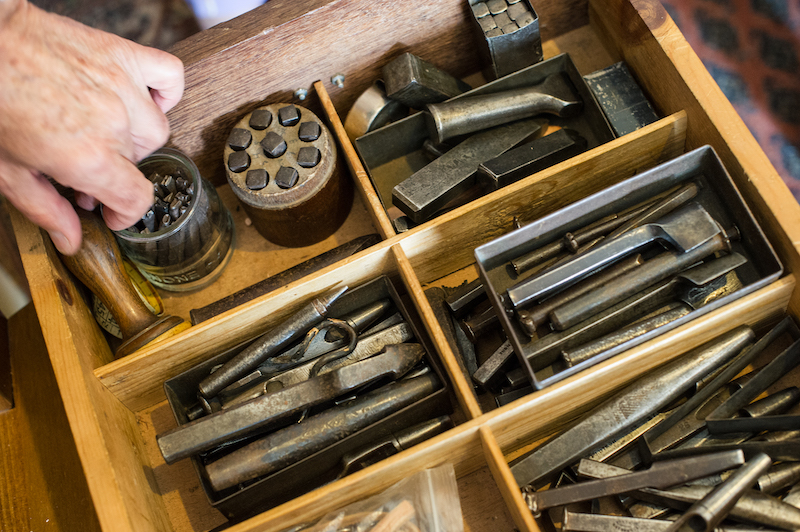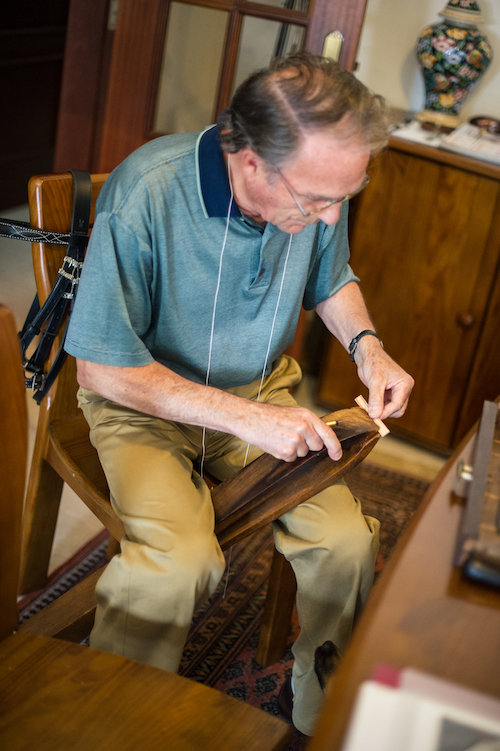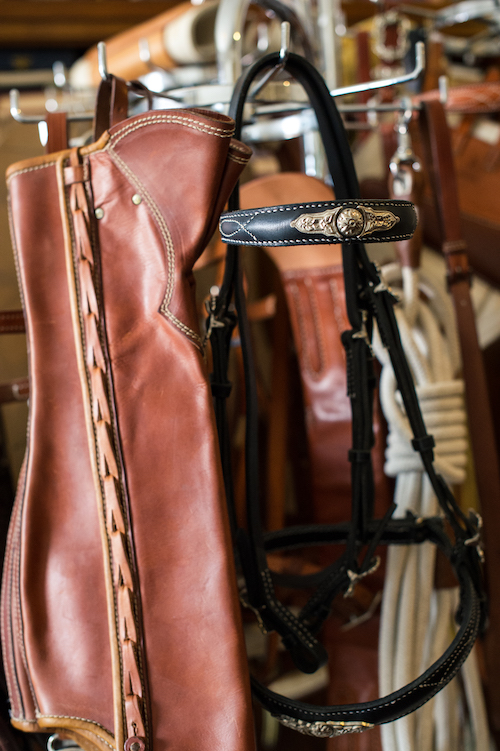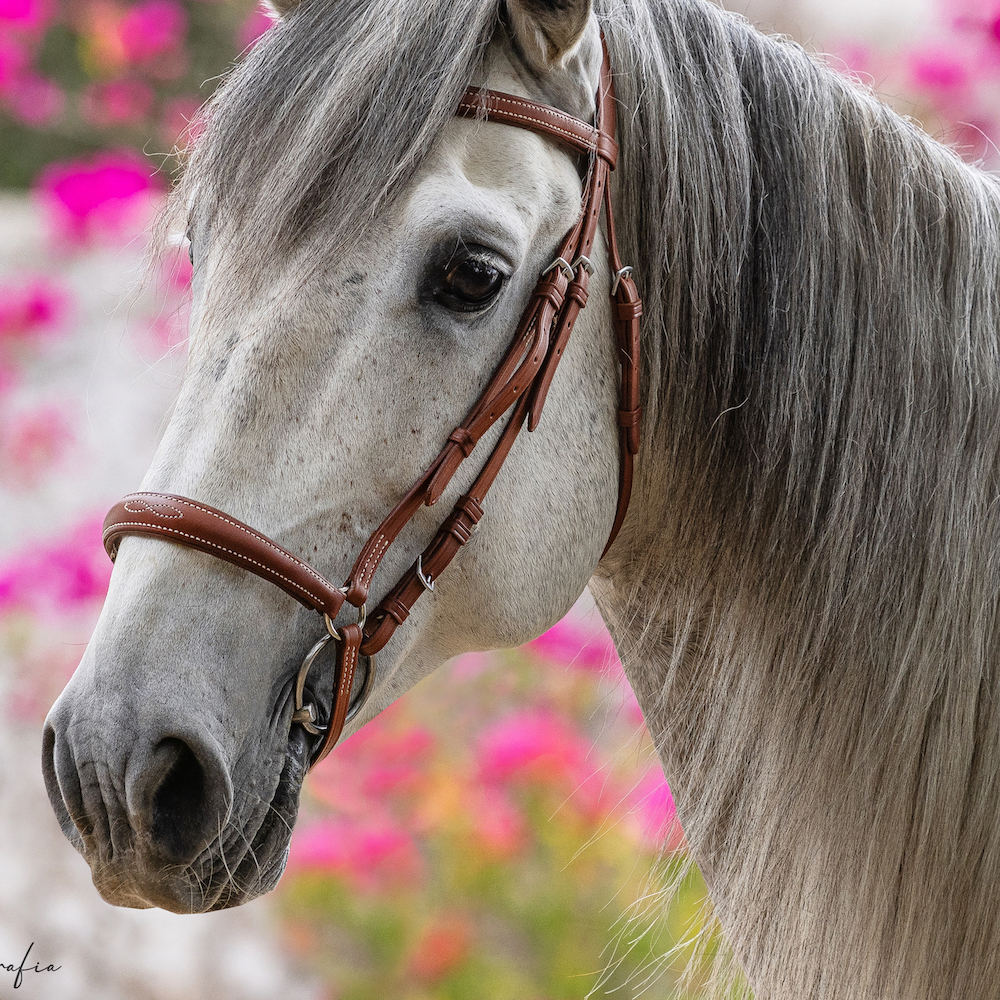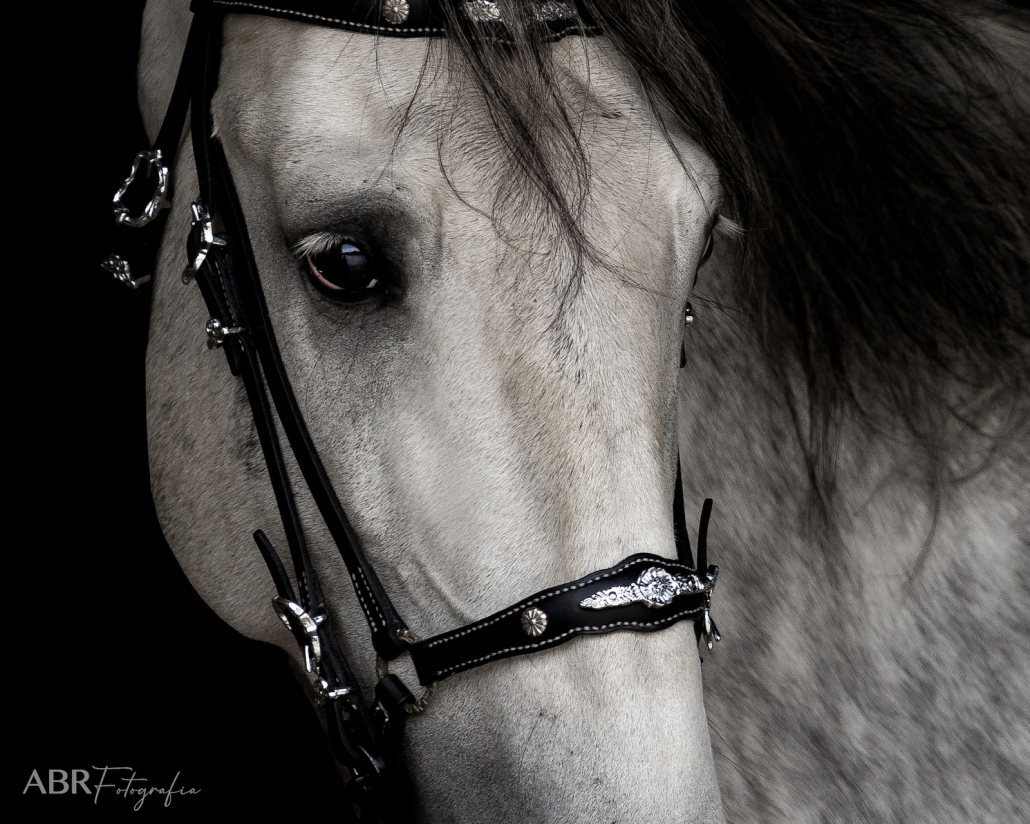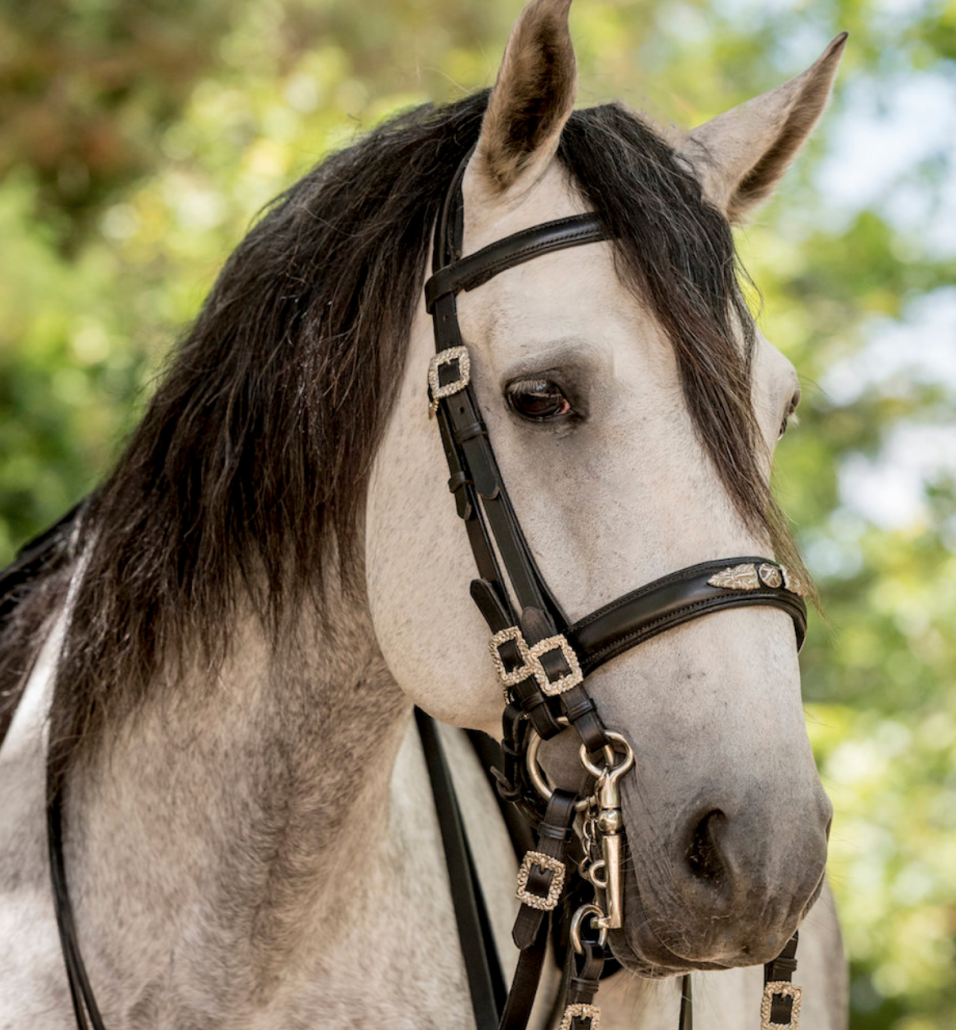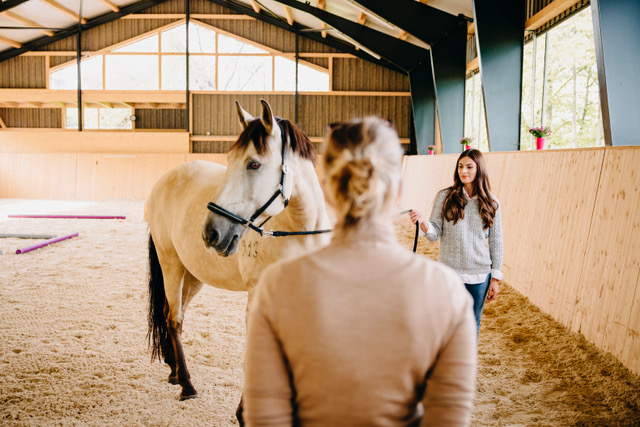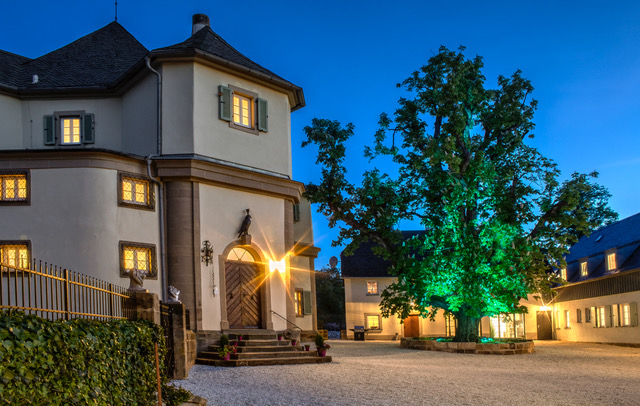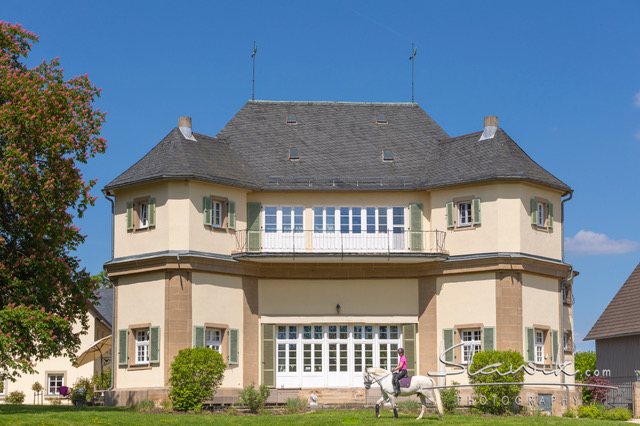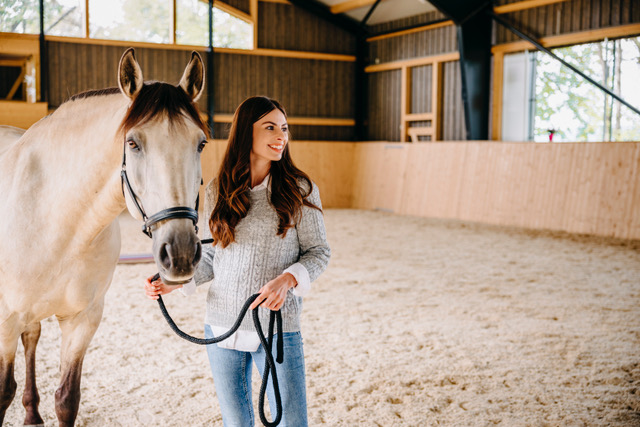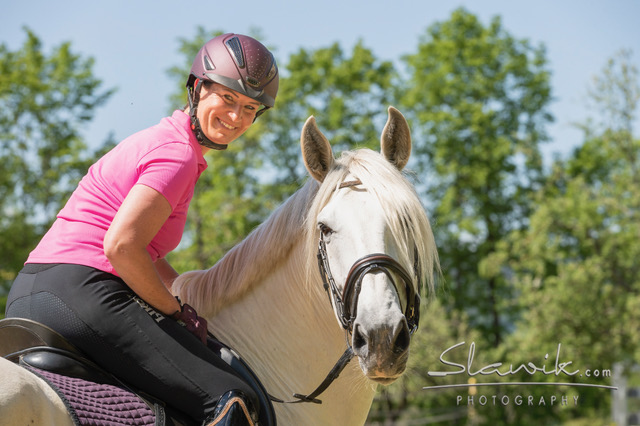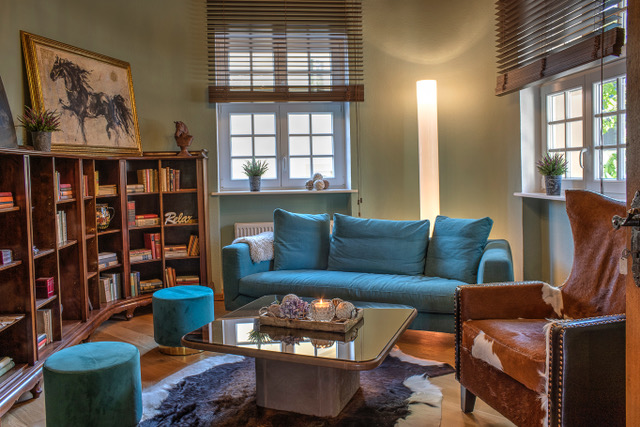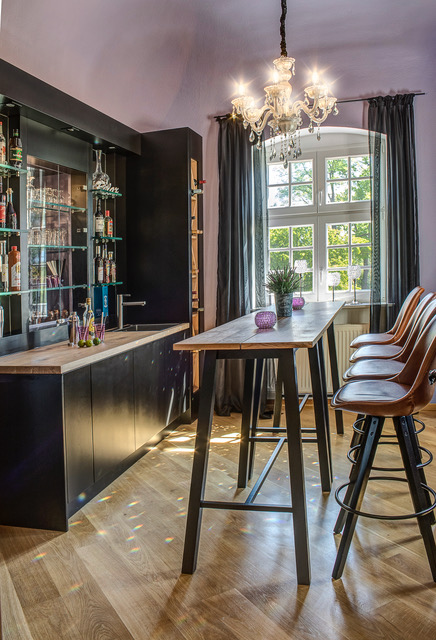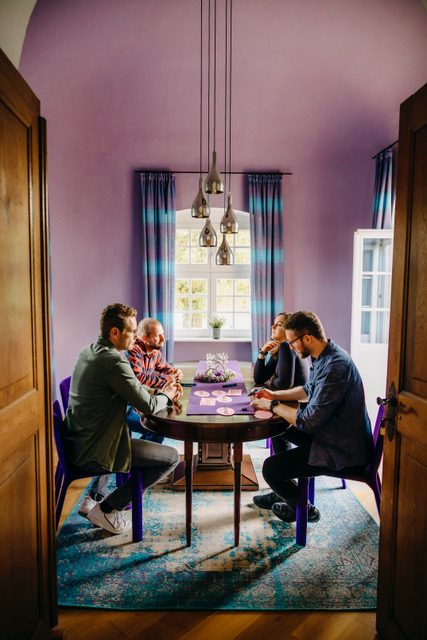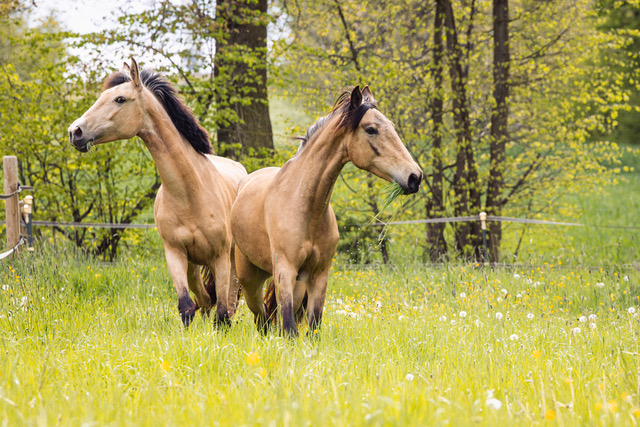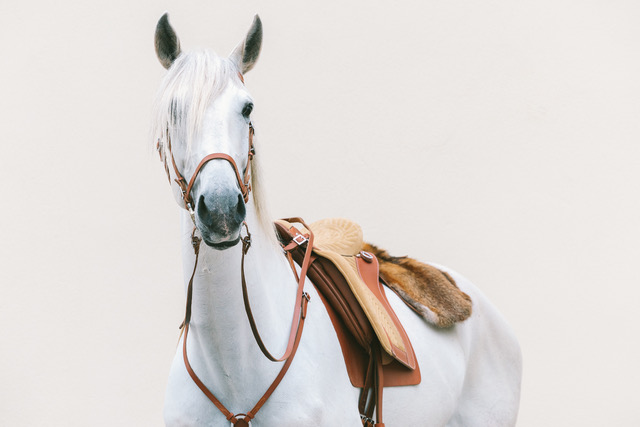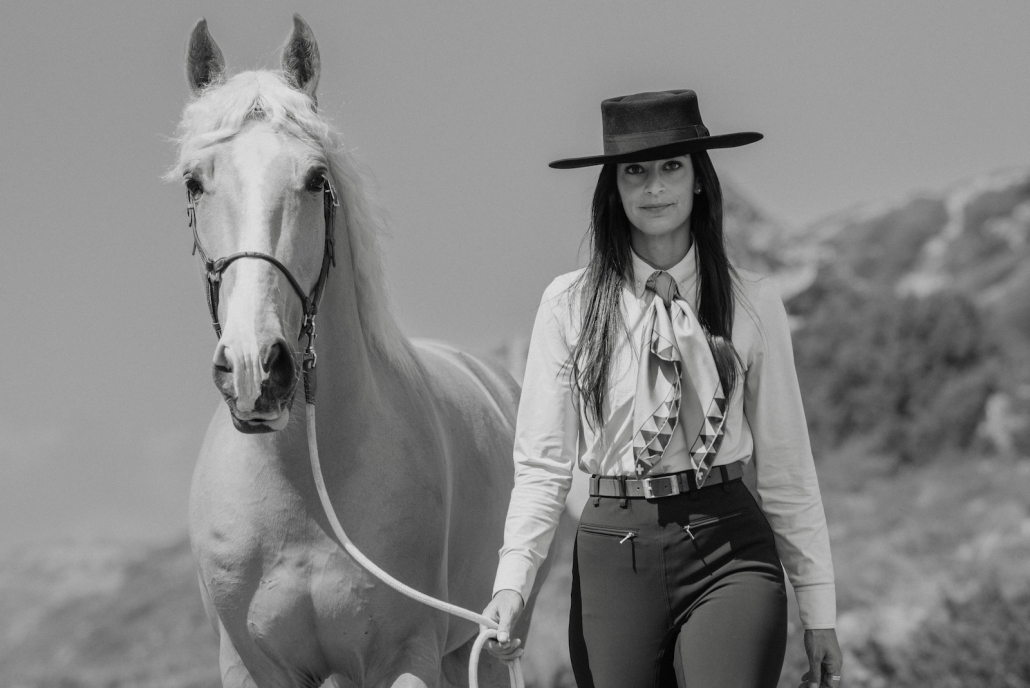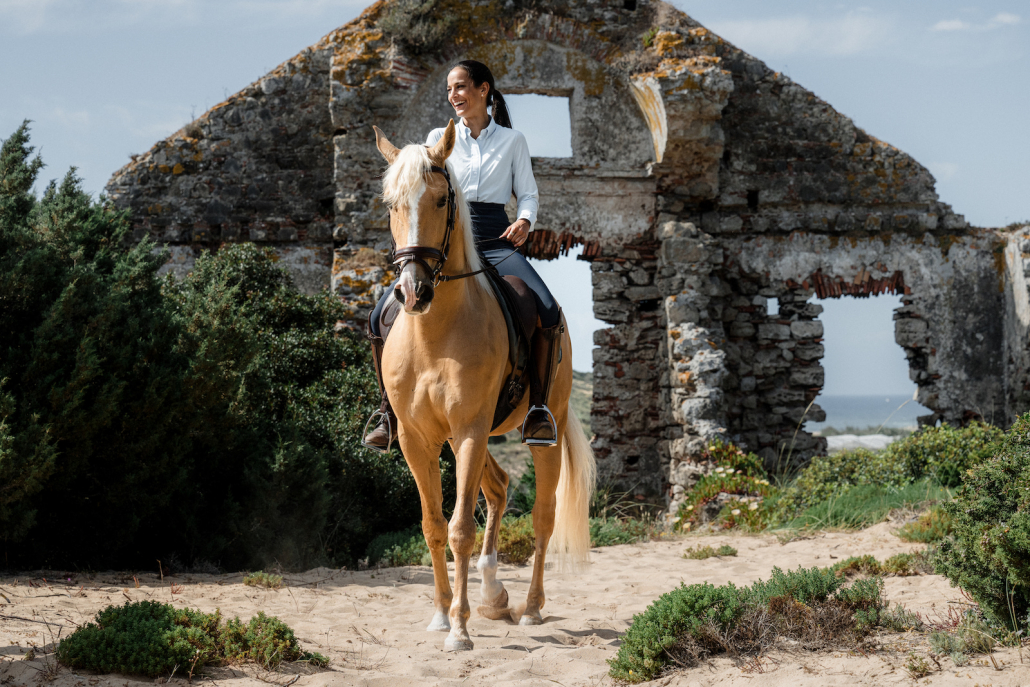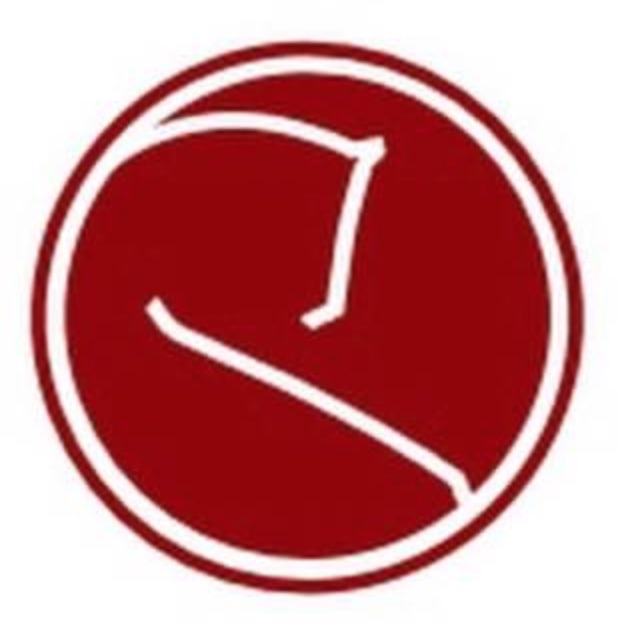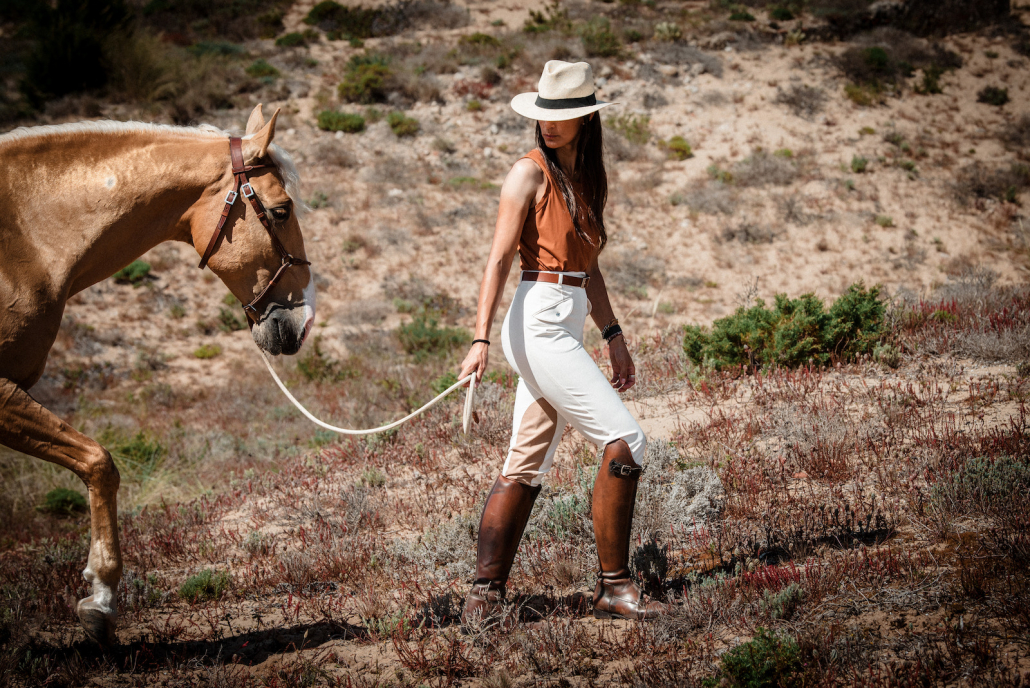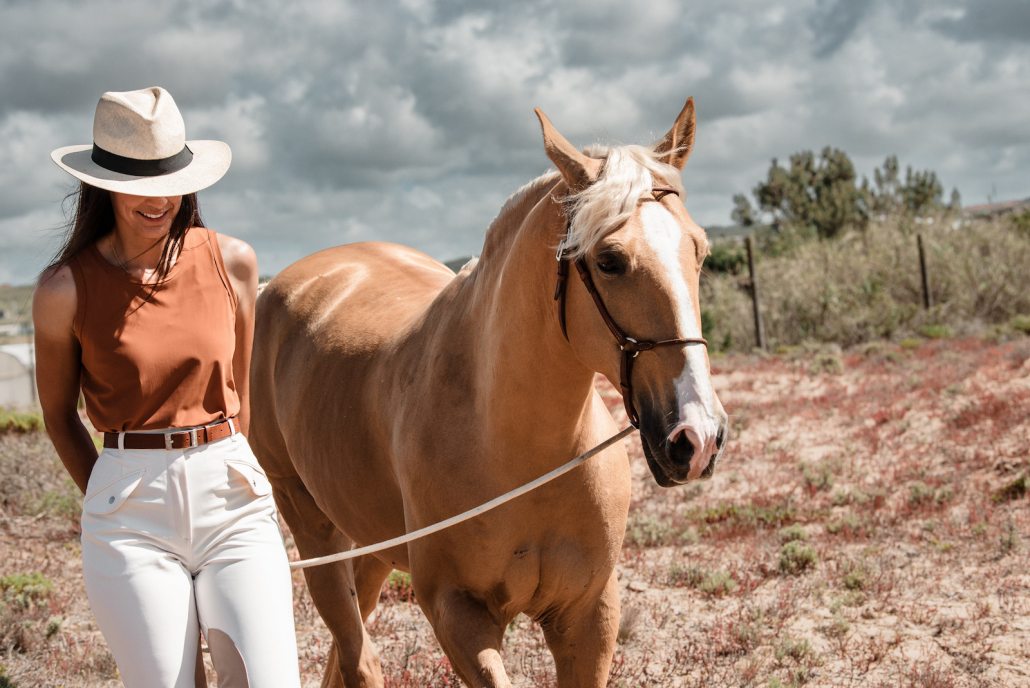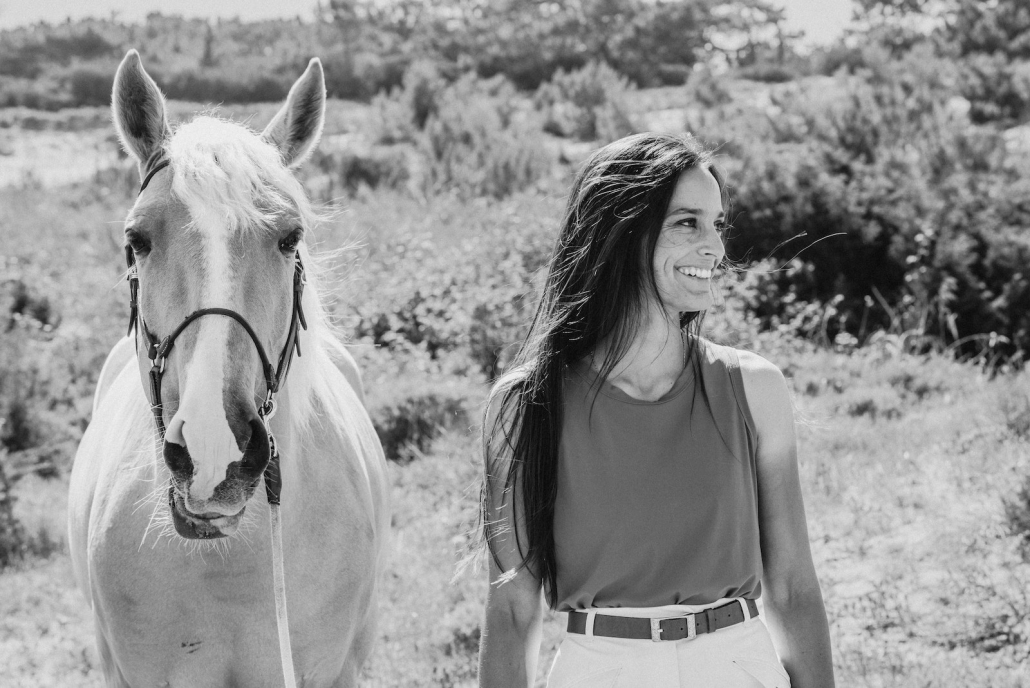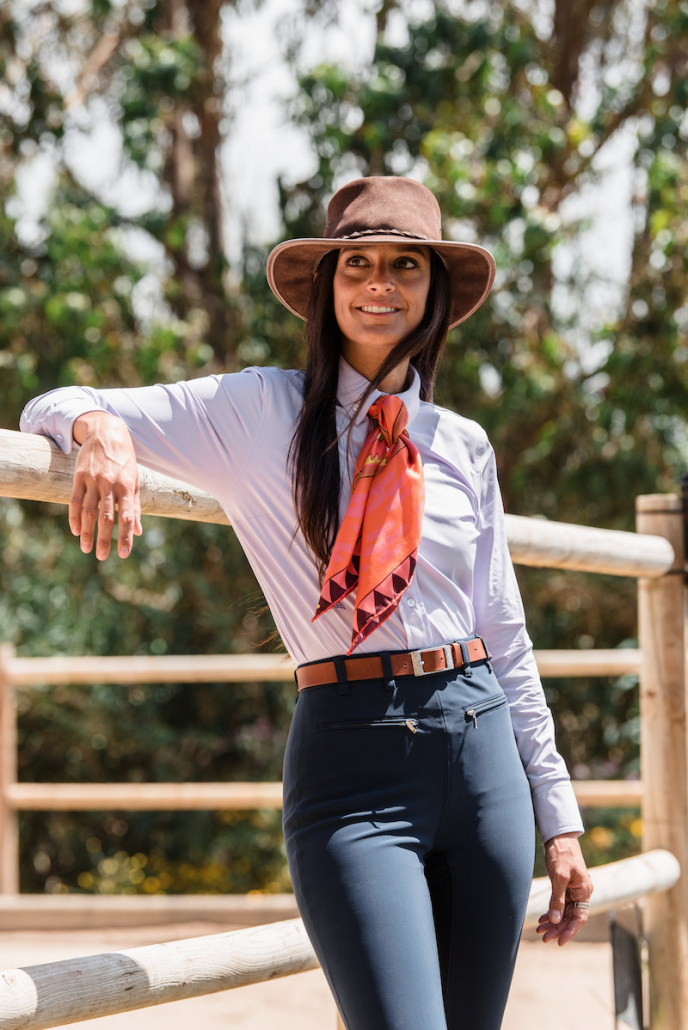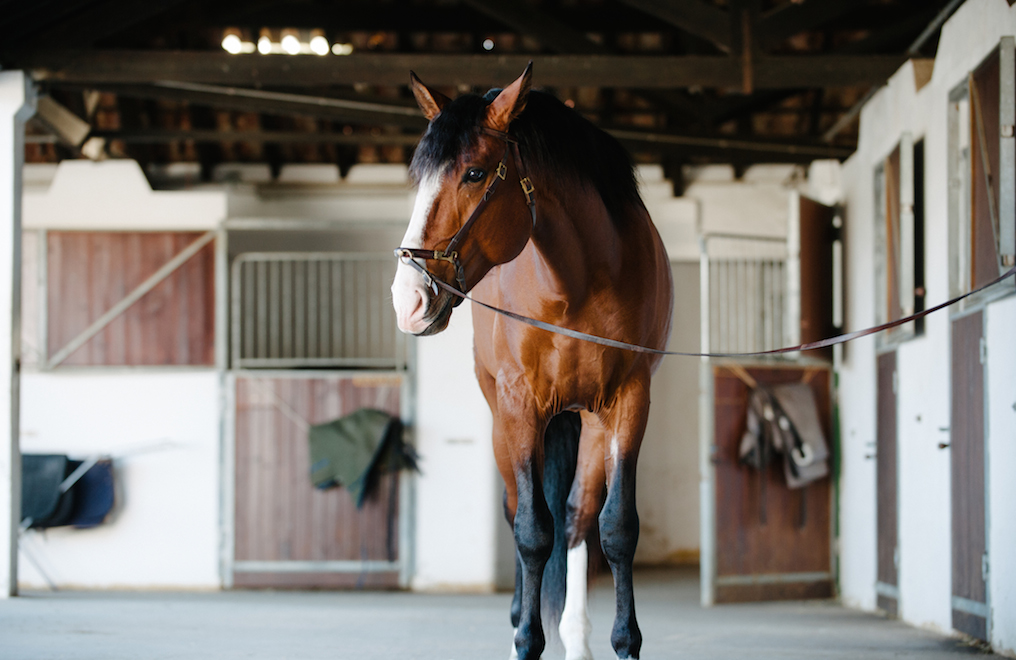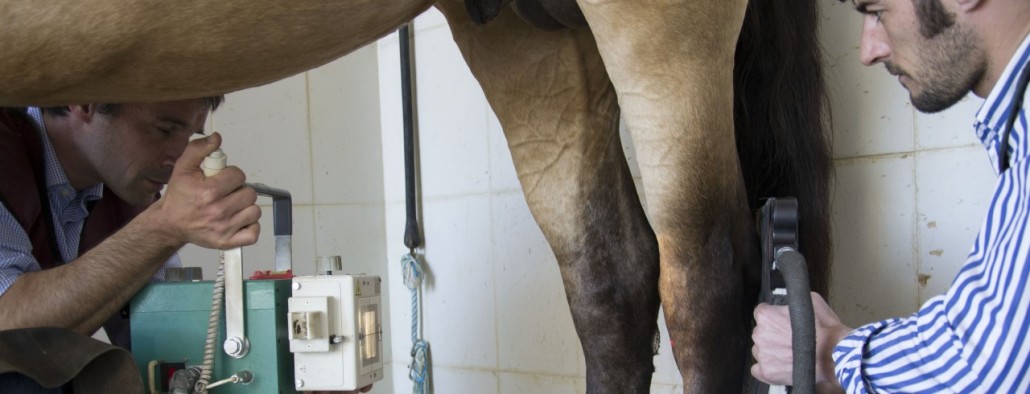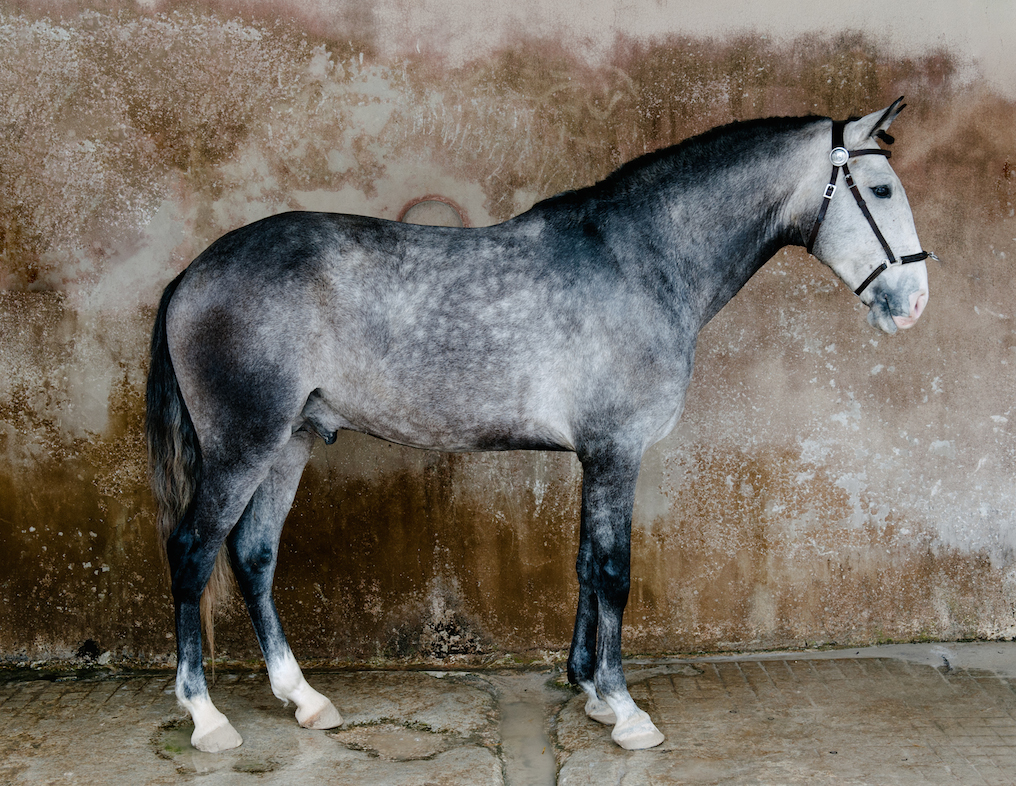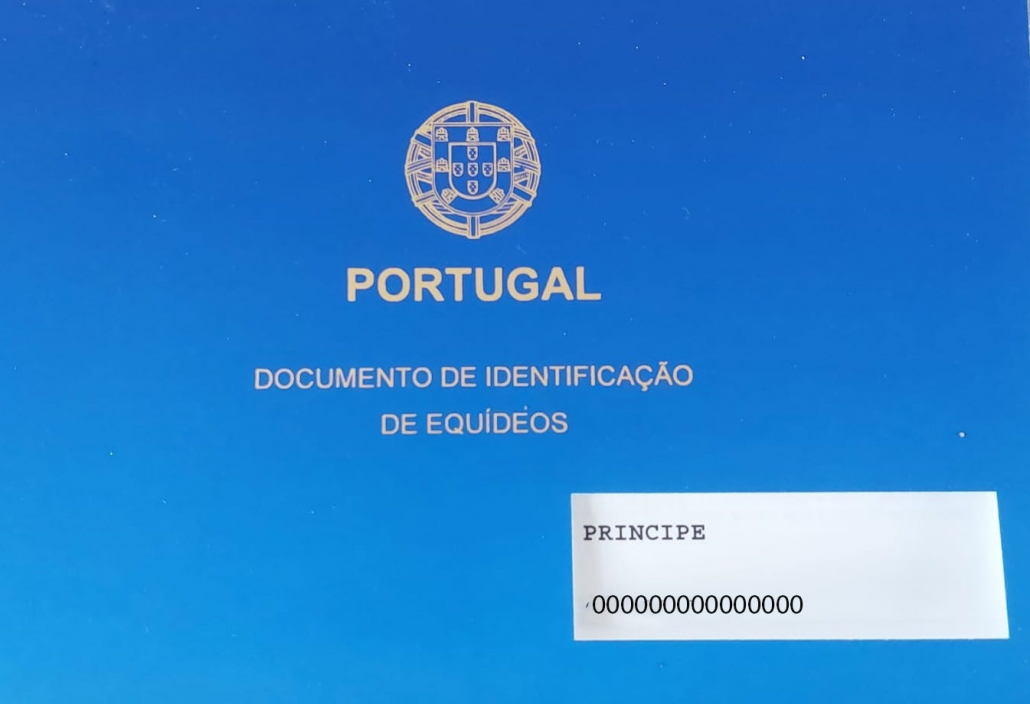Alentejo Ranch Holidays now Booking
Favouring Traditional Methods over Modern Machinery
Text by Teresa Burton Photography by ABR fotografias
Last year we made a visit to the stunning farms of the Tavares Moreira family, located in the Alentejo close to the Spainish Border.
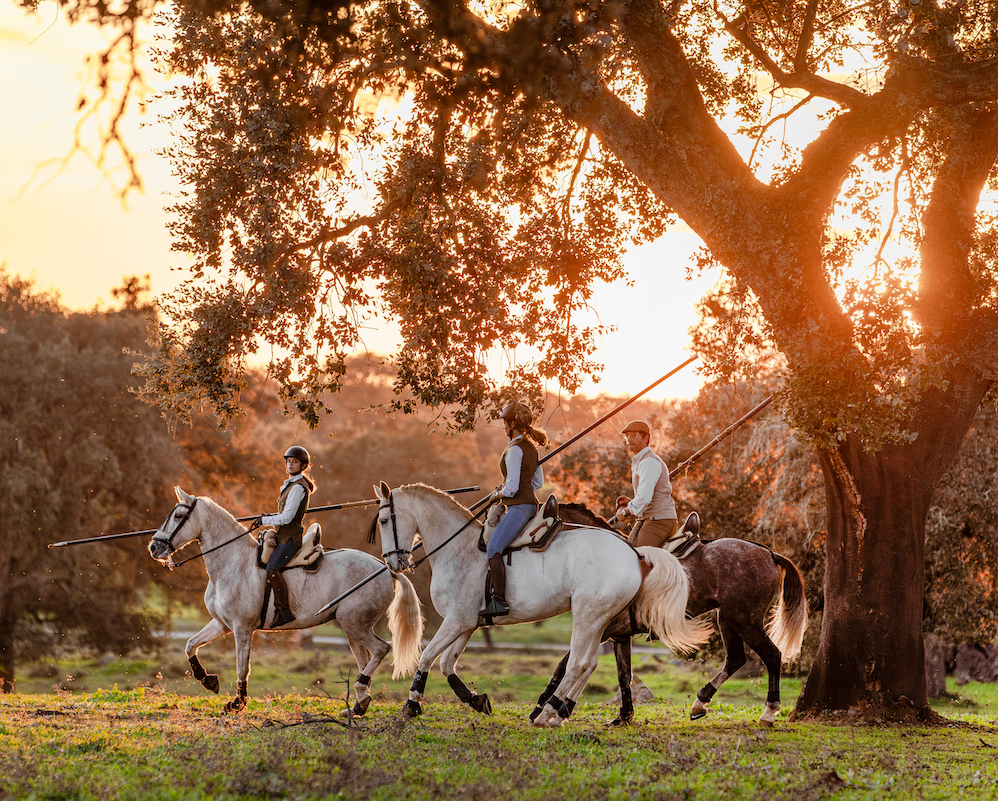
Bernardo Tavares Moreira with his wife Rita Torres Moreira and daughter Maria Francisca Torres Moreira.
The farms are called Herdade da Carapuςa and Herdade D´agosto
During our visit we were inspired to work with the family to open up an opportunity for people to have holidays on the farms. To provide a Traditional Portuguese Farm experience learning about the horses and cattle. Sadly like so many heritage activities many farms have turned away from using the horses to work with the cattle in favour of tractors and quads which they think are quicker and cheaper. However there are those that would disagree with this and highly value the more traditional methods. One of these people is Bernardo Tavares Moreira.
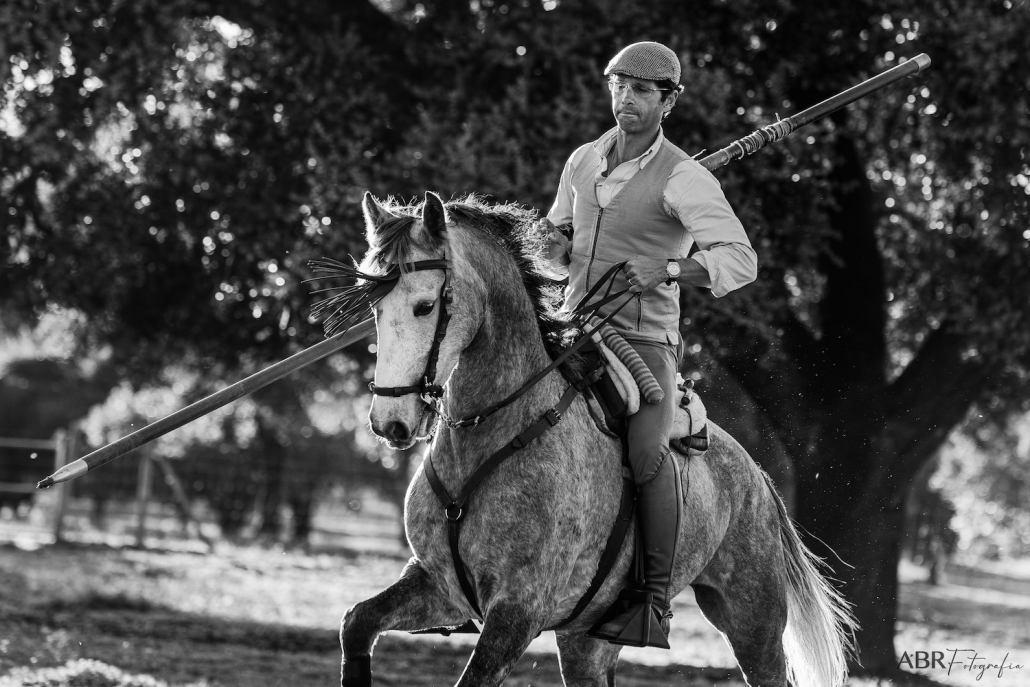
Bernardo Tavares Moreira
Since a very young age Bernardo has always been passionate about the traditional methods and rural life. Growing up in Lisbon he dreamed to be on the farm. A dream that never left him until finally he moved to the Alentejo to spend his days working with the cattle and the Lusitano Horses they bred. He continues to this day working the farm in the traditional way. Although of course, from time to tme he uses tractors and quads, almost always he aims to be managing the farm from the back of a lusitano.
Alentejana Cattle
The family are breeding pure bred Alentejana cattle. This is a Portuguese breed, also known as Transtagan. The breed orginates from the Alentejo region and was used for agricultural work. They are quite similar to the Spanish Retinta Breed.
These gentle animals are a medium build with a golden red colour. The horns are large and pointed forward with upturned tips. The hind legs very muscular and strong and the shoulders long and broad. They are considered rustic, energetic animals and they really suit the beautiful Alentejo landscape.
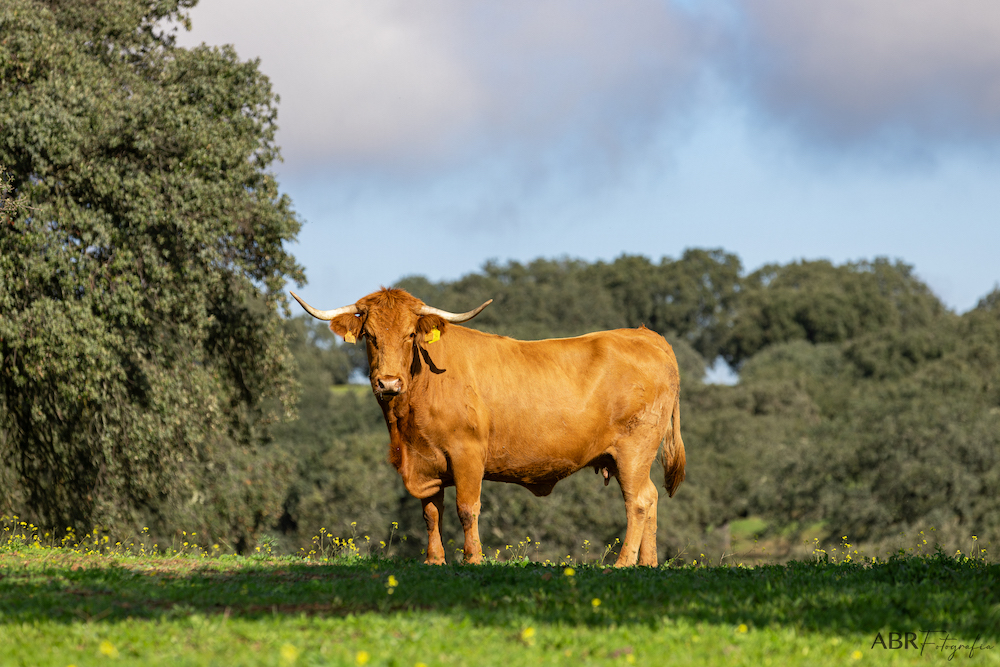
For centuries they were the most important working breed in the plains. However, from the mid 1900´s the mechanisation of agricultural work slowly took over. So the need for them to work the land deminished and they became used primarly for meat. The flavor of the meat is intense and it is very tender. However they didn´t produce enough meat so crossing them with other breeds such as Charolias and Limozines is done yielding more meat on each animal. With this change the pure genetics of the breed started to become comprised.
Because of this the studbook of the Alentejana was established in 1970. Breeders of this wonderful native breed began to work to limit genetic regression. National and community programmes set up to promote conversation and sustainable use of animal genetic resources.

Alenetejana Bull
Bernardo and his family continue this in their breeding programmes. They have 3 cattle herds on the farms. They don´t sell pure bred Alentejana cattle simply select the females to different herds according to their quality and genetics. The highest quality retained to breed pure bred cattle and the others crossed bred with Limousin and Charolias bulls for meat cattle. The cows and bulls are simply stunning.
The cattle are able to graze in expansive pasture lands of rolling hills dotted with cork oaks trees providing plenty of shade in the hot summers. It makes for quite a sight to visit these beautiful herds.
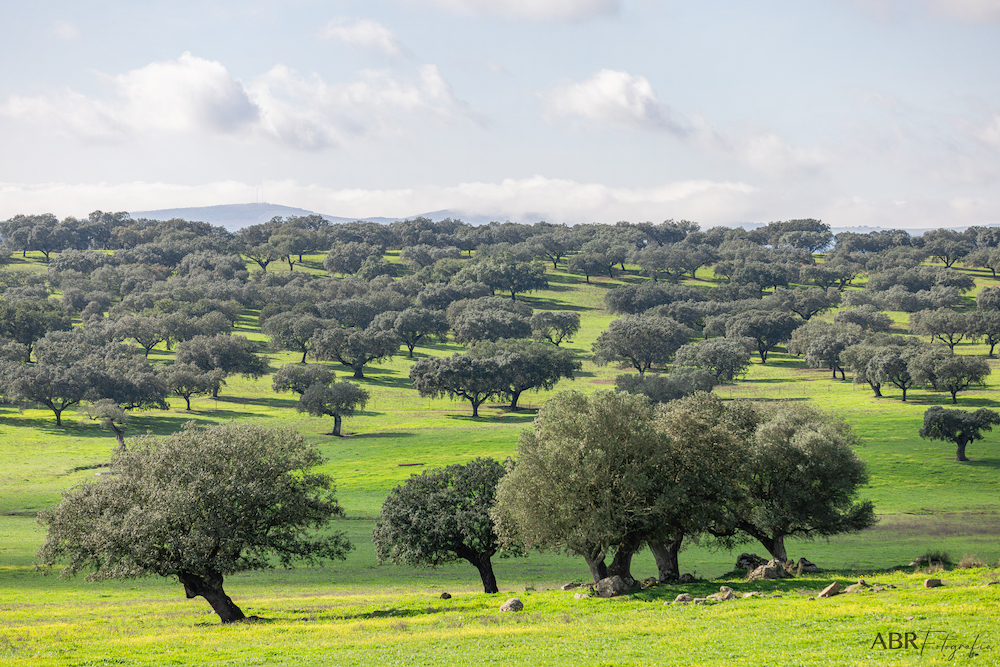
Landscape of rolling hills and cork oak trees
The Farm´s Lusitano Horses
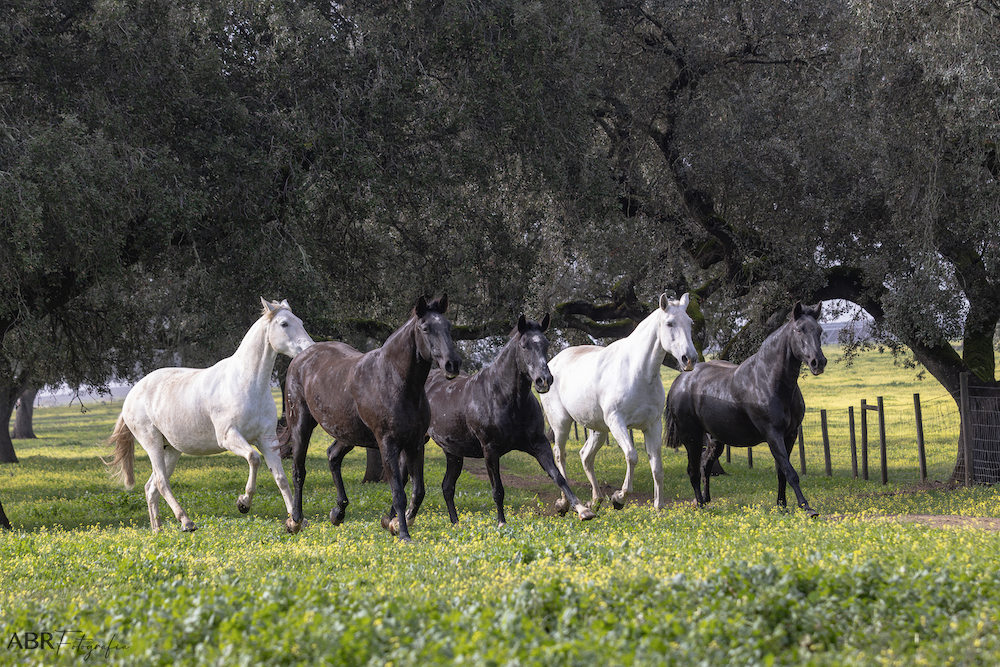
The Lusitanos mares
The stud farm has a small herd of quality Lusitano mares with old bloodlines suitable for bull fighting, working equitation and nowadays dressage. The horse have a lot of Veiga influence and recently with a dressage focus while maintaining the Baroque the mares have been put to the Olympic/GP stallion Forgoso. The horses are selected and some sold Internationally and the others retained on the farm.
The stud name is – Manuel Francisco de Moura Tavares Herdeiros (Manuel Tavares Herdeiros)
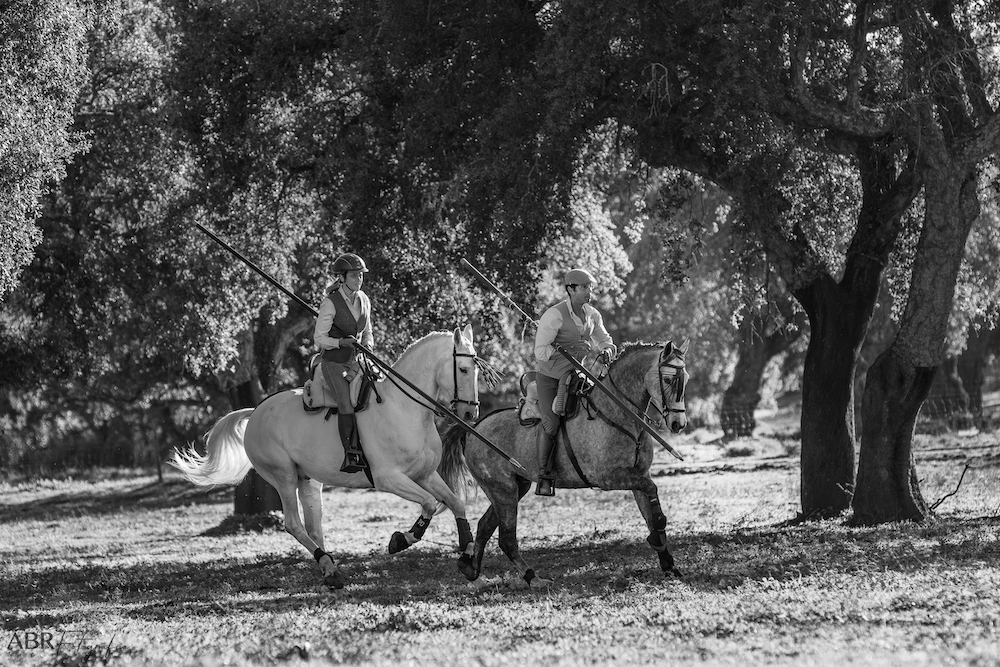
Bernardo and Rita
Bernardo breeds and trains all his horses which are a mix or pure bred Lusitanos and Luso/Arabs. Favouring the Vaqueira / Garrochista style and he has adopted many of the techniques.
Particularly the use the Garrocha that is now seen in part of the working equitation competition.
The working horses are all highly trained and have many advanced exercises that they need to quickly react and manuveur during work. Exercises such as canter pirouettes, lateral movements, canter changes are all required in the work.
His work is very skilled and simpatic and it includes everything from simply moving cattle from one pasture to another to separating animals for vacinations etc. From horse back it is much less stressful for the cattle, they comply easily because they totally accept the horses as their managers .
There is a special bond between the Lusitanos and the cattle.
The Family
This is all made all the more special as the whole family are in someway involved. Everyone brings so much creativity to the table. Bernardo´s wife Rita Torres Moreira is a nutritionist and on weekends she joins Bernardo along with their son and daughter to ride the horses and help with the cattle. Rita and their daughter Francisca are so skilled on their Lusitanos I really enjoyed watching them effortlessly manoeuvre the cows into pens for vacninating. carefully parting the calves so they didn´t get injured and minimising any stress in the process.
Rita´s brother is Rodrigo Torres one of Portugal most outstanding Olympic Riders.
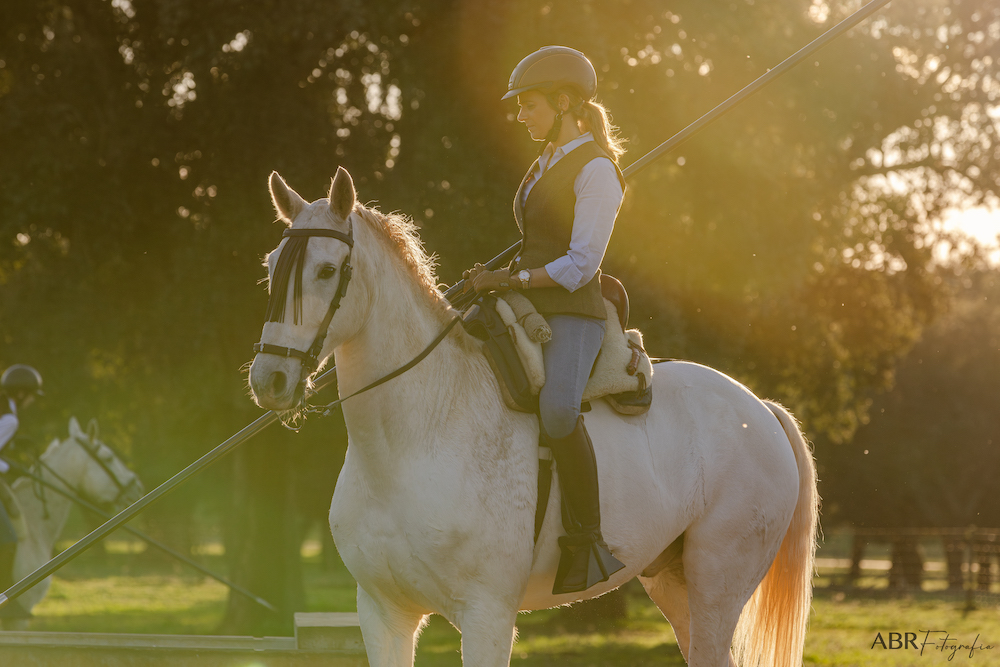
Rita Torres Moreira
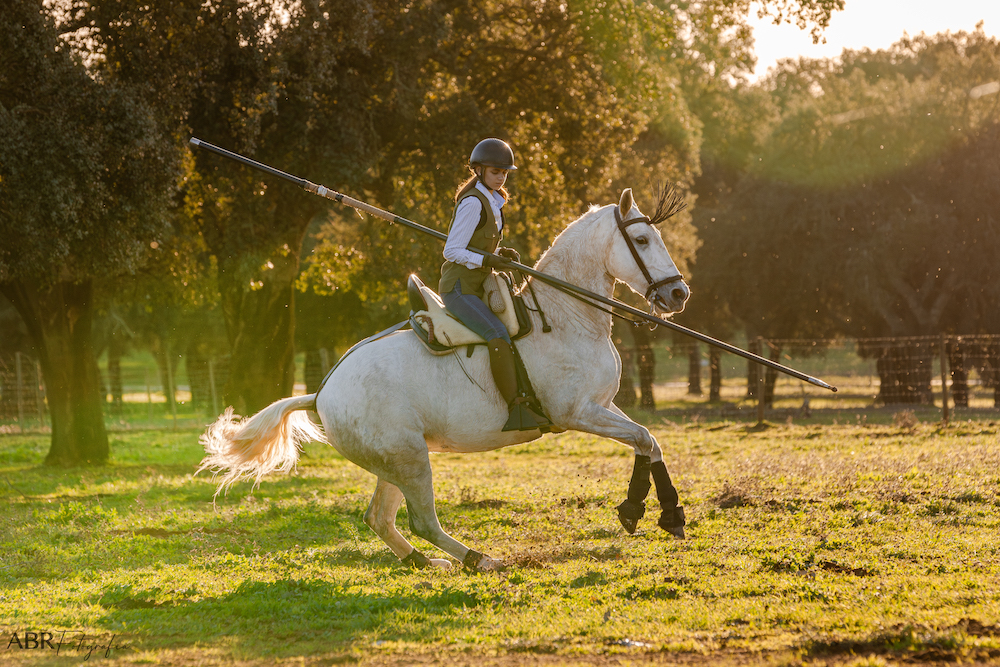
Maria Francisca Torres Moreira
Ana Tavares Moreira the owner of Carapura Farm has converted the old hay and animal barns into the most fabulous accomodations – stylish, creative, well appointed and peaceful. Surrounded by extreaordinary views in all directions you cannot help but love staying there.
Maria Claudia Sampaio Soares – Bernardo´s Aunt is a gifted potter. She has a pottery locally and provides classes for those interested to try it out. You can also order things to be made. We are have several items made by Claudia. Claudia owns Herdade Dagosto and breeds Lusitanos.
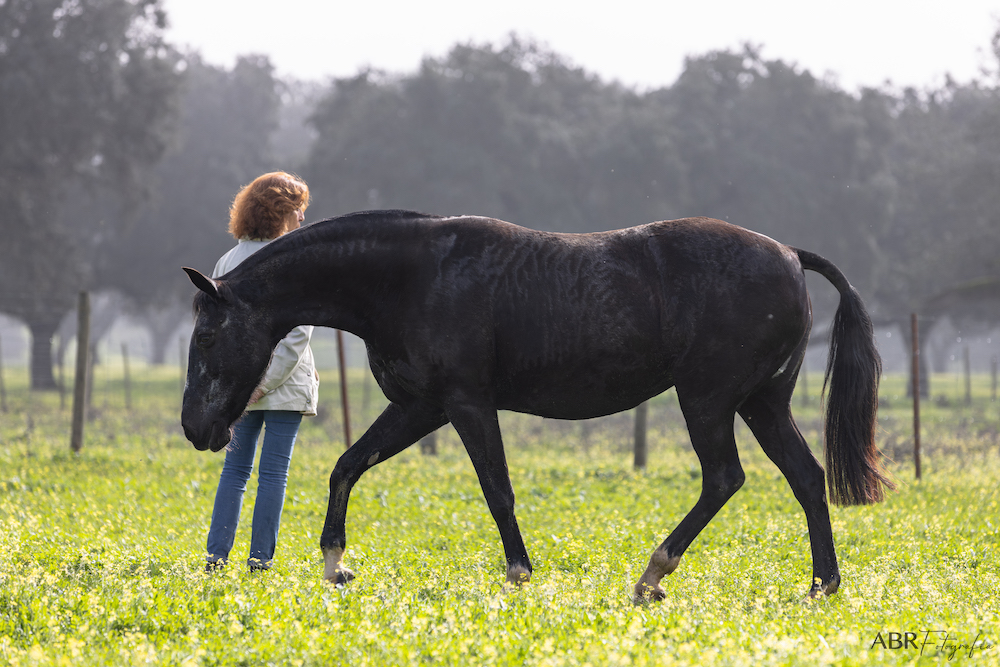
Cláudia Sampaio Soares
THE OPPORTUNITY
We are so happy that now we can offer you the chance to stay on these farm and learn with Bernardo a little about his life, how the horses are trained and worked with the cattle. It is available to up to 4 people per week. We only offer to small groups per week to ensure you have plenty of opportunity for individual tuition and an immersive experience.
Bernardo will provide all the training during your stay and his gentle confident manner will guide you through a remarkable experince of the working horses and all they need to do their job effortlessly.
FIND OUT MORE
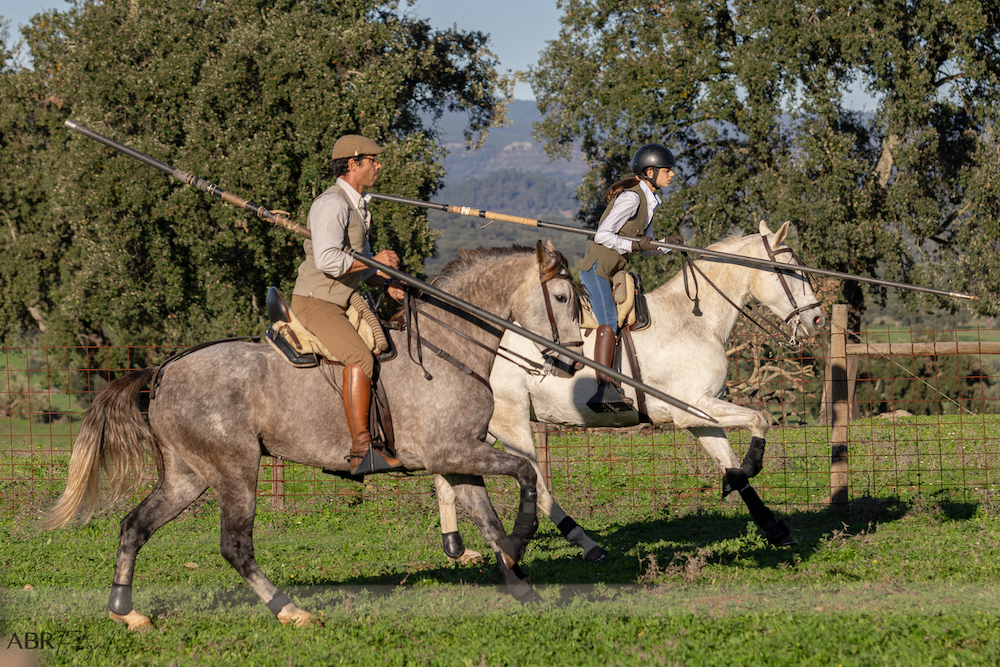
Bernardo and Francisca
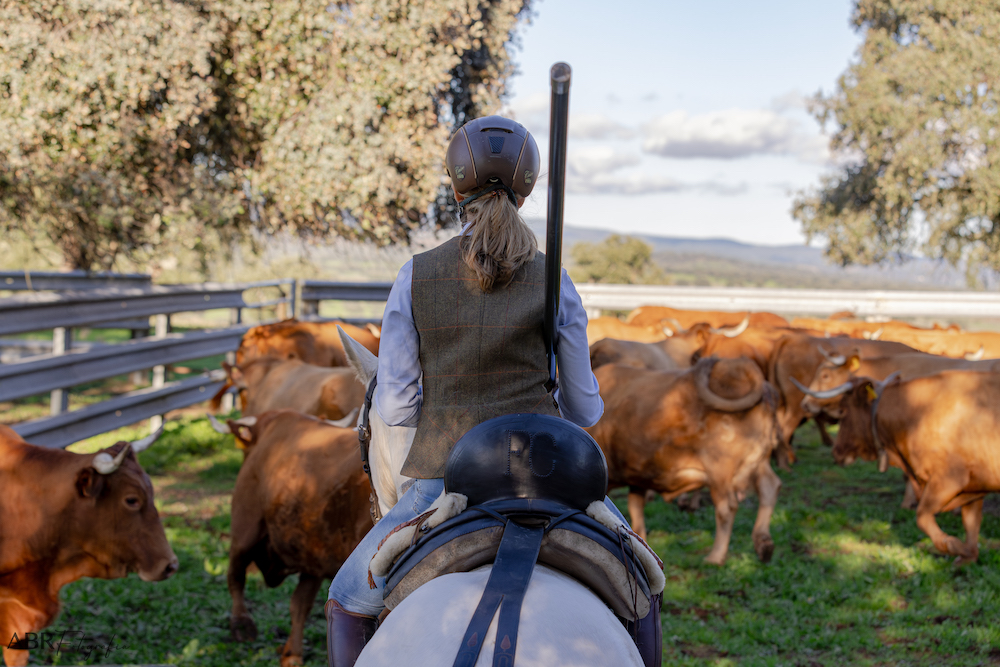
Rita with the cattle
INTERESTED IN HAVING A HOLIDAY ?
WANT TO KNOW MORE ?

